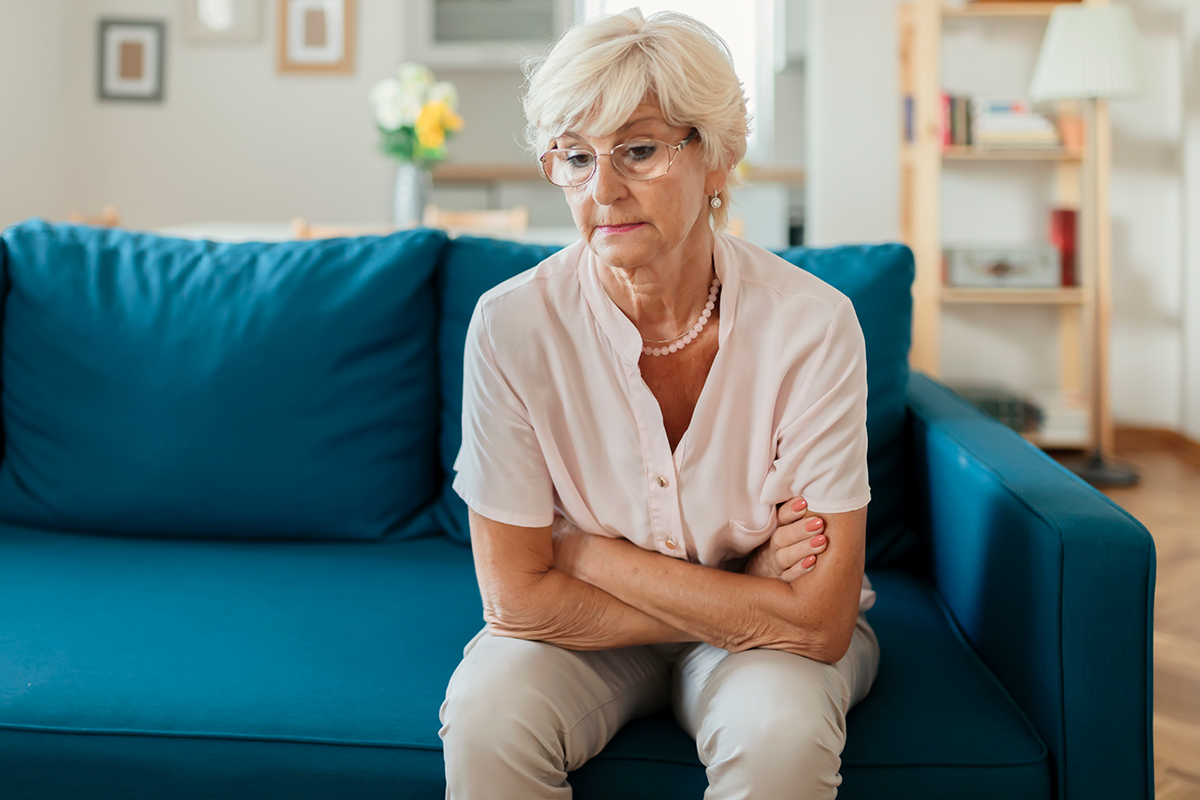Every year, millions of older adults fall – and many of them end up in emergency departments across the United States. In fact, falls are a leading cause of injury among older adults. As you get older, physical changes and health conditions – and sometimes the medications used to treat those conditions – can make falls more likely.
According to experts at Yale New Haven Health, however, falls are not an inevitable fact of aging.
Why are falls so dangerous for older adults?
According to Gerard Kerins, MD, a geriatrician with Yale New Haven Health and associate clinical professor of Geriatric Medicine at Yale School of Medicine, falls can cause a domino effect that often results in poor outcomes for adults over 65.
“Falls can lead to an increase in use of medical services and a decrease in function and activity, making it hard for you to get around on your own as well as you did before your injury,” he said. “Fractures of the wrist, shoulder, hip and/or pelvis can have a devastating effect on independence.”
In addition, just the fear of falling can also affect your quality of life and keep you from being active, he said.
Risk factors for falls
Why do aging adults fall? While there are a number of potential risks factors, most older people fall due to their own unique combination of reasons, according to Dr. Kerins.
“It’s important to identify the circumstances and ask yourself what you were doing and feeling when you fell,” he said. “This will help identify if it is something that needs to be evaluated further.”
Risk factors include:
- Health conditions that can cause issues with balance or walking (i.e. Parkinson’s, arthritis, diabetes, vertigo, heart disease, blood pressure, etc.)
- Vision or hearing problems
- Decrease in cognitive ability
- Medications
- Cluttered and/or poorly lit environments
- Alcohol use
“Once you understand the particular factors contributing to a fall, it’s easier to focus on the fall prevention strategies that are most relevant to your specific situation,” Dr. Kerins said.
For patients or family members who are concerned about falls, he recommends an exam to determine and prioritize risk factors for falls through an evaluation of general mobility and fitness, a review of medications and home environment, and an assessment of strength and balance.
“If needed, treatments may include balance training, strengthening exercises, stretching, postural training and mobility activities based on specific deficits. Treatment may also involve safety education related to vision, footwear, home environment and mobility as well as recommendations for assistive devices and specialist consultations and adjustments to medications as needed,” Dr. Kerins said.
Fall prevention strategies
When it comes to falling, some risk factors can't be avoided. However, many can be modified to prevent falls. A few tips for preventing falls include:
- Begin an exercise program. Ask your doctor about the best exercises for you. Walking, for example, can improve balance, coordination and muscle strength.
- Have your healthcare provider or pharmacist review your medications. Some prescription and over-the-counter medications may interact with others to make you dizzy or sleepy.
- Have your vision checked at least once a year. Glaucoma or cataracts can increase your risk of falling.
Tips to make your home safer
- Create a clear walking path through rooms. Ask someone to move the furniture so you don’t have to walk around it.
- Remove throw rugs or use double-sided tape to keep them in place.
- Reduce clutter. Don’t leave things on the floor or stairs because they become trip hazards.
- Secure power cords for appliances, lighting and electronic devices next to the wall. If needed, have an electrician put in another outlet.
- Avoid using step stools. Keep items you use the most in a low cabinet so you can reach them easily. If you must use a step stool, get one with a hand grip. Never use a chair as a step stool.
- In the bathroom, install grab bars near your toilet and in your tub or shower. Use nonslip mats in bathtubs and showers.
- Improve the lighting in your home:
- Put in brighter light bulbs.
- Install an overhead light at the top and bottom of the stairs, along with light switches in both locations.
- Use a nightlight so you can see the path from your bed to the bathroom.
- Install handrails on all staircases. Fix loose or uneven steps.
- Paint the top edge of each step with a contrasting color. It will help you see the stairs better. For example, use a light color of paint on dark wood.
- Keep your home at a comfortable temperature. Extreme heat or cold can make you dizzy and unsteady on your feet.
- Get up slowly after you sit or lie down.
- Wear supportive shoes when you are inside as well as outside. Choose shoes that fit snugly and have no-slip soles and a flat or low, wide heel. Avoid going barefoot. Don’t wear slippers, flip-flops, backless shoes, high heels or shoes with smooth leather soles.
- Write emergency numbers in large print and keep them near each phone.
- Put a phone near the floor in case you fall and can’t get up.
- Wear a personal safety alarm.




